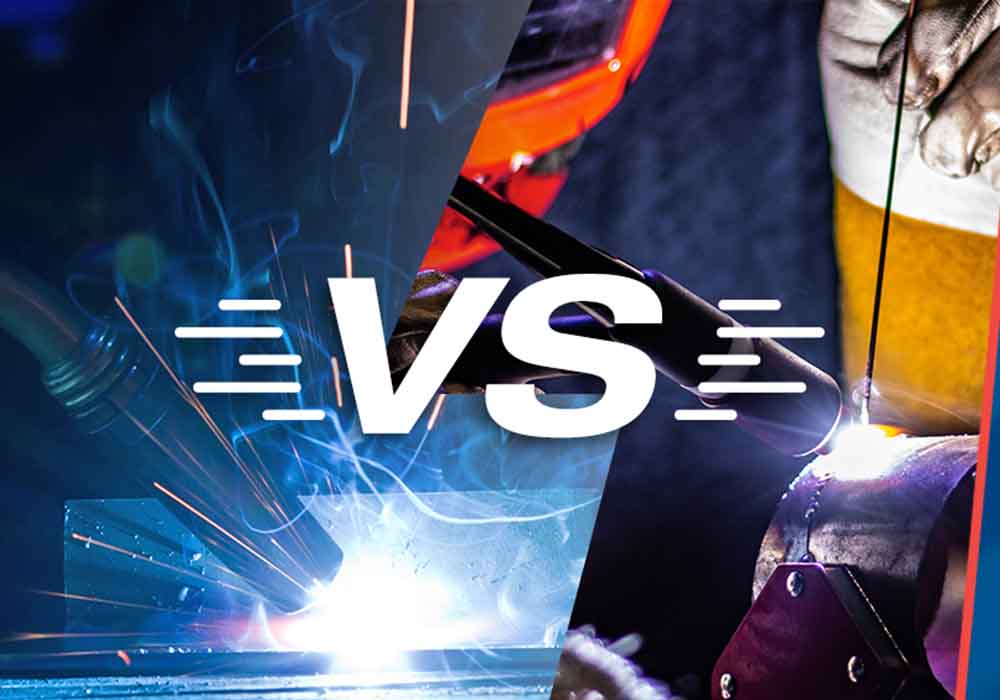Because MIG welding employs a consumable filler material to make welds, it can often complete welds of thicker metal objects in less time than a TIG weld.

For the TIG welding procedure to be successful without filler material, the pieces of metal being welded need to be hot enough to form a bond with each other. Typically, this is easier with thinner pieces of metal than with thicker ones. Using this process on thicker pieces of metal can create heat stress cracking and other issues.
Overall, for really thick, heavy-duty welds, MIG welding is the go-to option. For thinner pieces of metal, TIG welding tends to be a more effective solution.
MIG Vs TIG Welding: Ease of Control
Generally speaking, MIG welding is more often recommended for ease of use. The process tends to be a bit more forgiving of mistakes than TIG welding is—so it’s often recommended for first-time operators and non-professionals.
TIG welding, on the other hand, requires very strict control over the timing, pressure, and electric current used in the weld. In most cases, TIG welding is best done using an automated, computer numerically-controlled (CNC) welding machine. Machines can reliably perform identical welds over and over much more easily than a manual welder could.
When using an automated welder (whether it’s MIG or TIG), it’s important to get the weld settings and controls just right—otherwise, you risk repeating the same mistake over and over.
What is Better: MIG or TIG Welding?
——Related Post:Why MIG Welding is Better Than TIG Welding
The answer depends on the job in question. As noted earlier, MIG welding is typically better for heavy-duty welding work where larger, thicker pieces of metal are being joined because it uses filler material.
However, TIG welding can work wonders for joining smaller pieces of metal, such as the wires for a custom steel wire basket. Also, because the TIG process directly joins two pieces of metal, there’s no filler material to fail—meaning less money spent on welding supplies.
With robotic welding equipment, TIG welding can be a bit lower-maintenance, since the welding electrode isn’t being constantly consumed by the welding process. However, TIG welder parts, such as the welding electrode, still need to be properly cleaned and polished between uses—especially when welding stainless steel.

